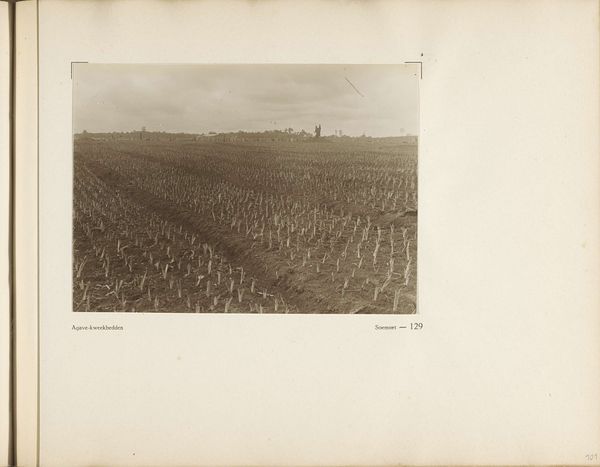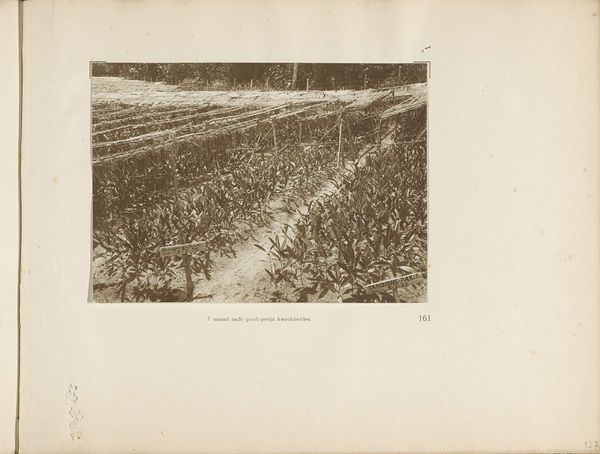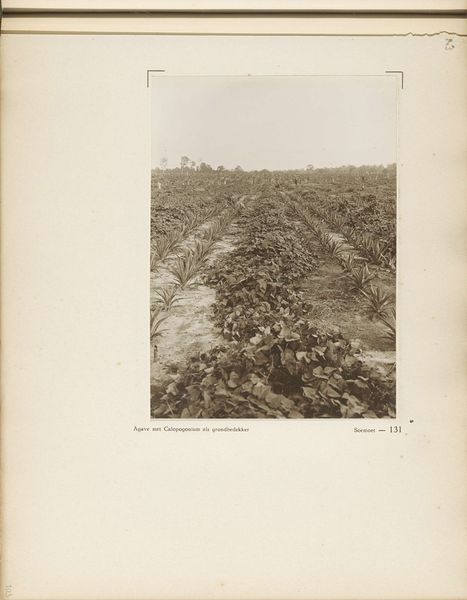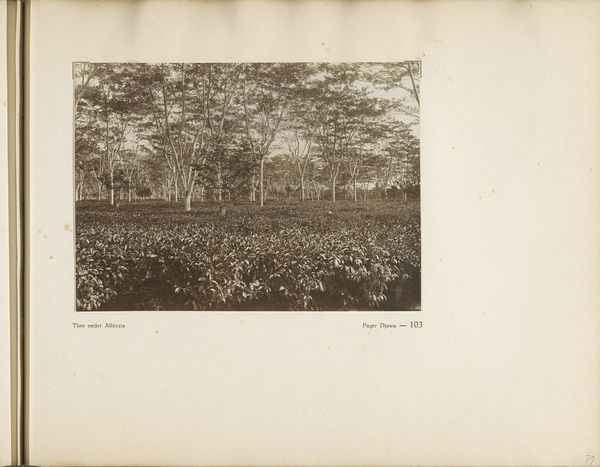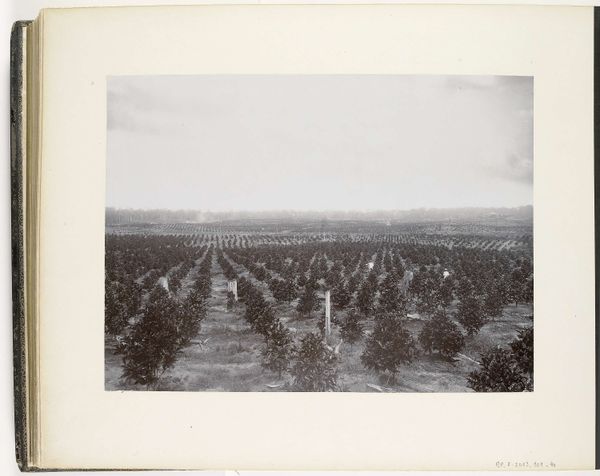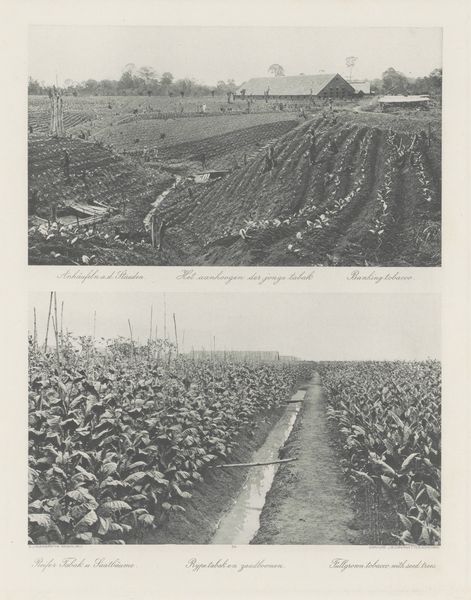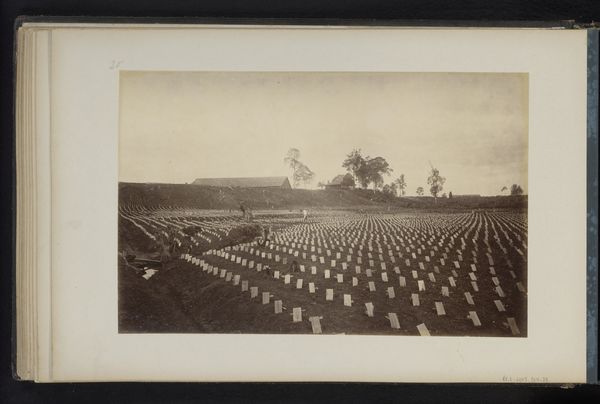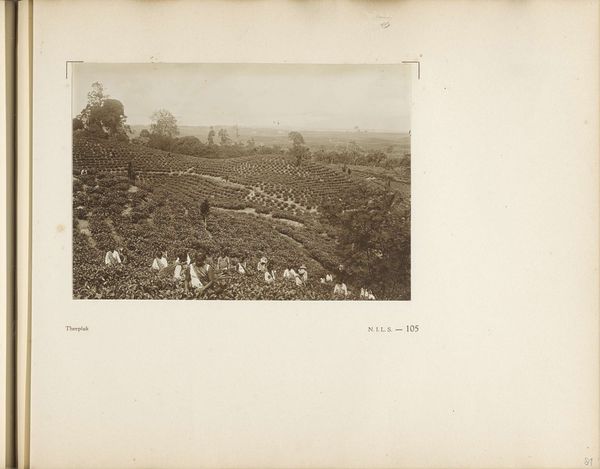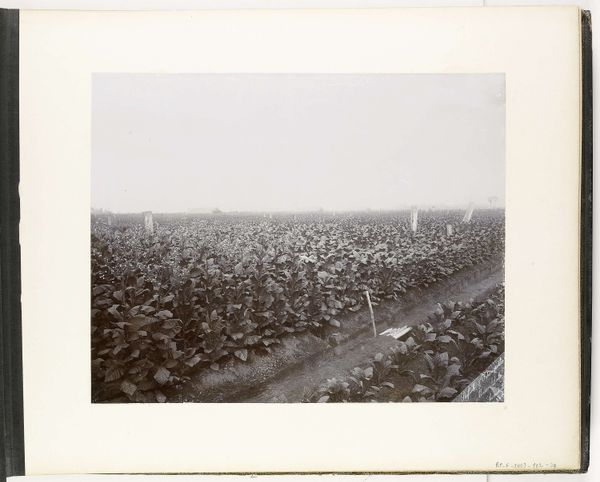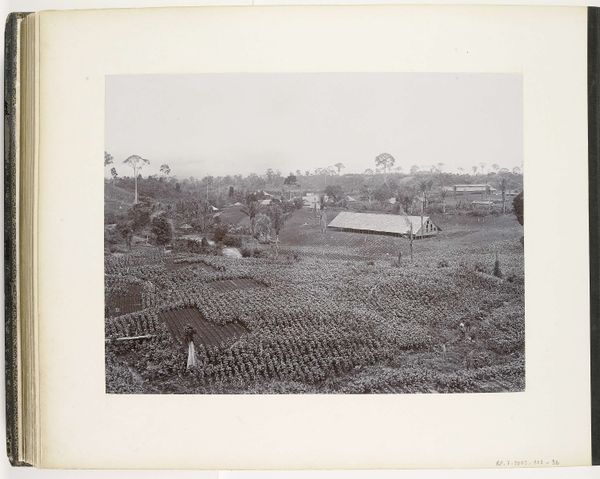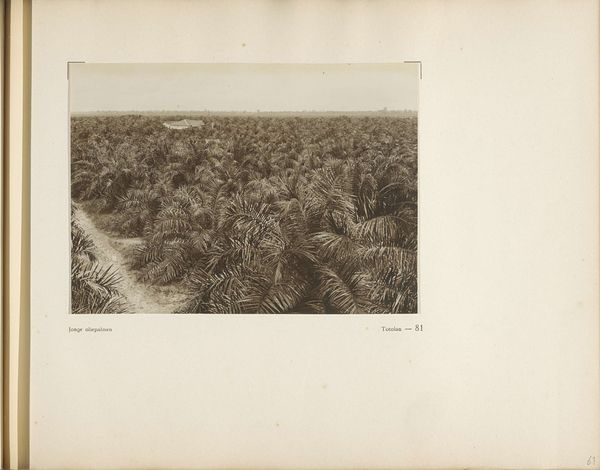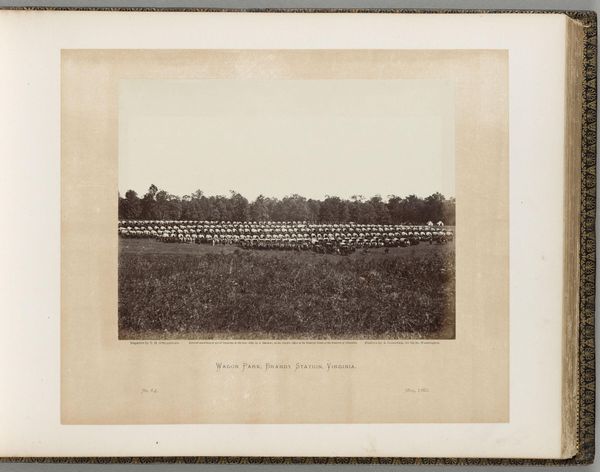
Pagina 102 van fotoboek van de Algemeene Vereeniging van Rubberplanters ter Oostkust van Sumatra (A.V.R.O.S.) c. 1924 - 1925
0:00
0:00
photography, photomontage
#
landscape
#
photography
#
photomontage
Dimensions: height 240 mm, width 310 mm
Copyright: Rijks Museum: Open Domain
Curator: Alright, let's dive in. Editor: This is "Pagina 102 van fotoboek van de Algemeene Vereeniging van Rubberplanters ter Oostkust van Sumatra (A.V.R.O.S.)," made around 1924-1925 by J.W. Meyster. It’s a photograph, part of a photomontage, held at the Rijksmuseum. I'm struck by the ordered rows; they are somehow unsettling despite the calm landscape style. What draws your eye? Curator: My focus immediately shifts to the socio-economic context embedded within the photographic materials and the very act of its creation. Who was Meyster photographing for, and why? What processes shaped the making of rubber at this time and what kind of exploitation of labour was present? Editor: So you're seeing this less as landscape photography and more as a document of a system of production? Curator: Exactly. Consider the "rubberplanters" mentioned in the title. The material conditions of colonialism and global trade networks become palpable. We must examine the means by which this image was produced, circulated, and consumed, revealing the power structures at play. Editor: That reframes it completely! It's no longer a static image, but a piece of evidence of something much larger, a testament of global commodities trade. Curator: Precisely! The labor involved in rubber production and its distribution becomes tangible. Can photography serve to conceal its social and environmental costs? What role did images like this play in promoting rubber products? Editor: It's a shift in perspective - focusing less on the artistry and more on the industry. This makes the artistic process only a small component of a much greater social mechanism. Thanks, it definitely made me rethink my interpretation. Curator: Excellent! Seeing art as embedded in larger networks of material culture allows a richer, deeper interpretation.
Comments
No comments
Be the first to comment and join the conversation on the ultimate creative platform.
